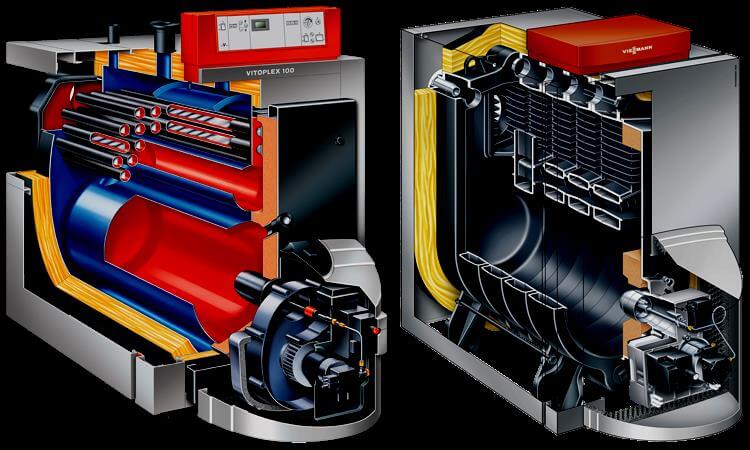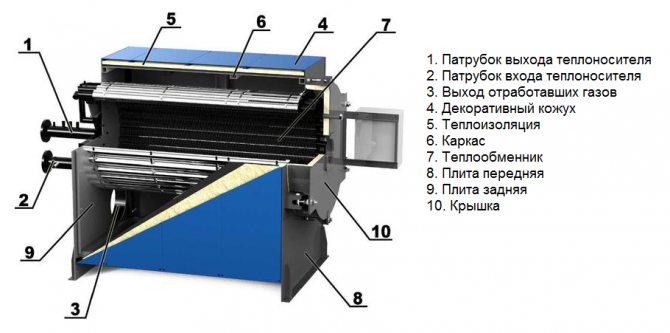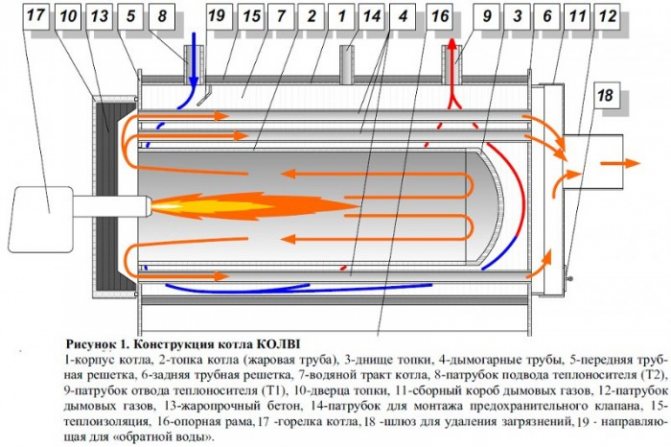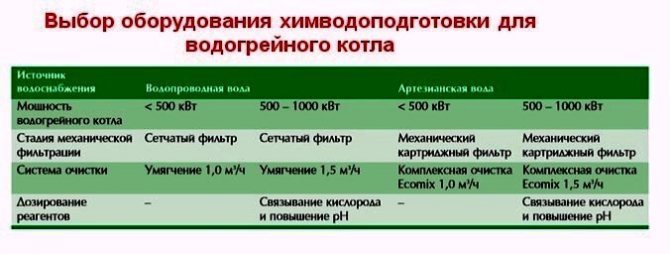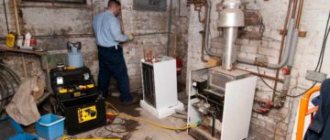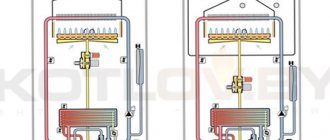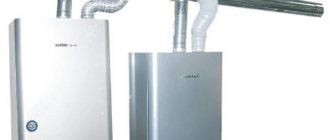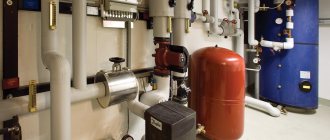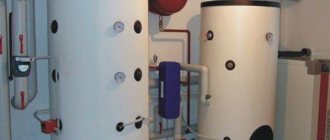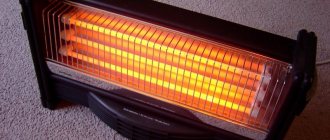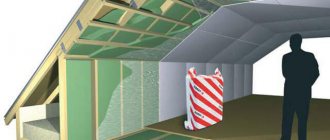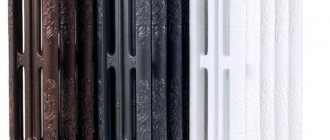Operation and construction of a hot water boiler
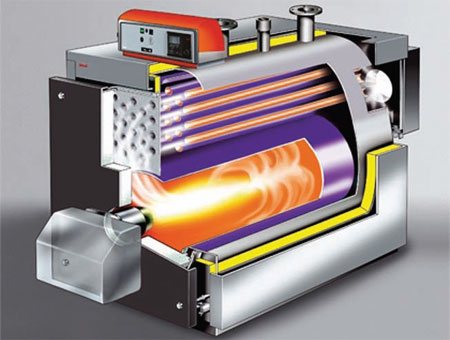
Regardless of the equipment model, all devices work in the same way: the coolant is heated to the required temperature and transfers heat to the heating system.
There are the following types of water heating units:
- Gas.
- Liquid fuel
- Electrical
- Solid fuel.
The device of a hot water boiler is structurally different depending on the type of boiler selected, and, accordingly, depending on the fuel used, different burners are used. They can be atmospheric built-in atmospheric or replaceable supercharged ones. Built-in burners are designed to use only a certain type of fuel. Replaceable burners are more convenient, since they allow, if necessary, to easily switch from one type of fuel to another.
Classification
Currently, all industrial-type heating equipment is divided into several categories. The main division occurs into two groups. If the main sign of separation is the movement of gases or water, then industrial boilers are divided into fire-tube and water-tube boilers. In the first case, heating is carried out with saturated steam with a high moisture content, in the second - with water brought to a temperature of almost +100 ° C.


If the division is made according to the fuel used for heating water, then the classification is broader here:
- solid fuel;
- liquid fuel;
- electrical;
- gas;
- units operating on alternative fuels.
Factors that ensure the efficient operation of the device
There are several requirements that must be met for the efficient operation of a hot water boiler.
Before describing the main structural and technical characteristics, it is worth highlighting several main indicators that affect the quality of work, which are considered common and suitable for any device.
These include the operation of a hot water boiler and parameters such as:
- Equipment manufacturer.
- The quality of the device and its elements.
- Availability of a warranty period for the operation and maintenance of equipment.
For effective work, you need to pay special attention to the firebox. It must have a sufficient volume to burn the entire volume of the loaded fuel.
According to experts, it is this parameter that is an important calculated indicator that determines the total amount of mechanical fuel.
The principle of operation of industrial gas boilers
Gas industrial boilers run on natural gas, as it is considered one of the cheapest types of fuel. Industrial boilers, accumulating a large volume of heat energy, heat a large volume of coolant to a predetermined temperature, which is necessary for heating industrial and public facilities.
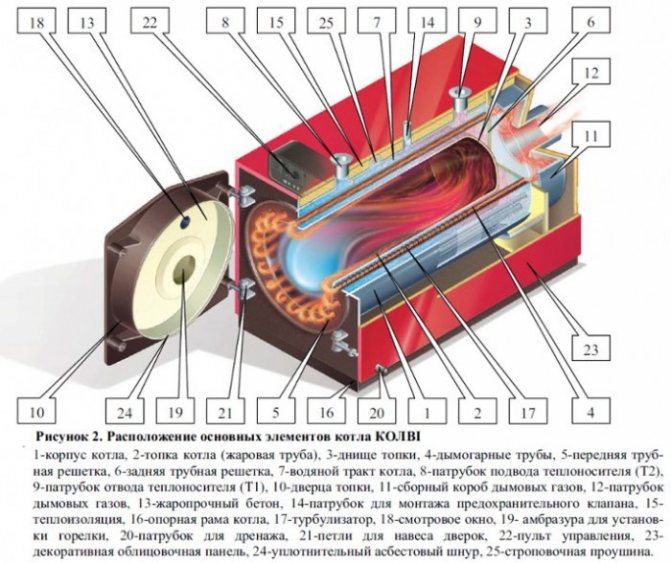

The principle of operation and the device of industrial boilers practically does not differ from the operation and device of household ones. Both boilers have a gas burner and copper heat exchangers. Gas enters the burner, and burning, heats the water in the heat exchanger, through which it is transported to the heating system.
The principle of operation and diagram of a hot water boiler
The coolant heats up to 115 degrees and then transfers heat to the heating system. Water becomes steam at a temperature of 100 degrees, therefore, to prevent boiling, a high pressure is constantly maintained in the boiler.
The higher it is, the better, since then the likelihood of wall boiling decreases, which means less scale is formed.
Regardless of the type of fuel, the principle of operation of hot water boilers is the same: the fuel is burned in the firebox, and through its walls, heat is transferred to the water, which circulates through the heating pipes. Each design is designed to provide maximum fuel combustion and efficient heat transfer.
Deaerators of atmospheric pressure are used in the schemes for the preparation of feed water for steam boilers and make-up water for heat supply and hot water supply systems at TPPs and in boiler houses.
You can find out what vacuum deaerators are here.
Special convective packages may be present in the design of a hot water boiler. They are designed to effectively cool the flue gases and reduce their temperature.
The surface of the bags in high-quality systems is able to reduce the temperature regime to 190-200 degrees. Lower temperature indicators should not be allowed, as there will be a possibility of condensation formation.
If after some time it mixes with ash deposits, which contain sulfur, this can lead to destructive sulfurous corrosion, respectively, the boiler will fail very quickly.
High-quality and at the same time the most efficient operation of the equipment is determined by high indicators of reliability and durability of the device. In the process of work, the water on all panels and screens carries out a multi-way movement.
A similar result is achieved through the installed plugs in the manifolds. Their quantity regulates the parameters of the speed of movement of the coolant in the device. In more detail, this process reflects the scheme of operation of a hot water boiler.
Waste heat boilers have the following principle of operation: they generate energy in the form of heated water, steam or air flow.
You can find out more about gas recovery boilers here.
If you purchase a hot water boiler from a serious manufacturer, you can be sure of the quality and durability of the device.
This is largely based on the correct selection of the speed of movement of the water, which gives the minimum resistance of the circuit. This will minimize salt build-up and scale formation.
SELECT BOILERS BY AREA
Steam boilers are installed where there is a need for steam. These are various branches of the food, woodworking, light, tobacco industry, medicine, agriculture, production of building materials, fuel oil economy. The boiler house offers to buy steam industrial gas boilers of the series.
Industrial steam boilers with steam temperatures up to 115 ° C:
- Steam boiler with a capacity of 300 kg of steam per hour;
- Steam boiler with a capacity of 500 kg of steam per hour;
- Steam boiler with a capacity of 700 kg of steam per hour;
- Steam boiler with a capacity of 1000 kg of steam per hour.
Industrial steam gas boilers with steam temperature up to 170 ° С:
- Gas steam generator 300 kg of steam per hour;
- Gas steam generator 500 kg of steam per hour;
- Gas steam generator 700 kg of steam per hour;
- Gas steam generator 1000 kg of steam per hour.
An integral part of any type of gas boiler is a gas burner. From the way in which gas fuel is supplied, burners are divided into injection, inflatable and diffuse.
Injector or atmospheric burners draw in air along with the gas stream. Inflatable gas burners receive air for the combustion reaction by means of a fan. The mixed mixture of air and gas enters the furnace. In diffuse burners, air enters by diffusion directly to the combustion site. The boiler house completes the produced gas boilers with burners of both domestic and foreign companies: GBL, WEISTHAUPT, Oilon, UNIGAS and others.
The operation of industrial gas boilers is fully automated and controlled by the instrumentation included in the package. This makes it possible to save on the number of maintenance personnel.
Industrial gas boilers are as safe as possible to operate. An explosion valve is installed in the rear part of the boiler drum to protect against high pressure inside the boiler.
The gas burner is hinged in the front part of the boiler, which allows it to serve as a door for inspection and repair of the boiler.
Plants for the production of boiler equipment
There are several dozen plants of boiler equipment in Russia, some of them have a long history of development, starting from the beginning of the 20th century, others arose in the last decade.
The Monastyrischensky plant began the production of boiler equipment back in 1957, it supplied all the republics of the USSR with advanced mechanisms. Most of the boilers supplied by the plant are still in operation.
Their reliability and efficiency were so high that buyers waited for delivery for years, obtaining permission exclusively through the relevant ministries and departments.
Currently, the plant has carried out a complete reconstruction of production and produces updated boiler equipment for steam and hot water boilers and modular transportable boiler plants according to the OKPD code, including the entire list of auxiliary equipment, water treatment systems, smoke ventilation and gas pipelines.
The Shchekino plant for boiler auxiliary equipment and pipelines began work in 1952, the enterprise produces both standard and non-standard boiler equipment and pipeline systems for the repair and reconstruction of existing power facilities and metallurgy enterprises.
Biysk boiler plant produces boiler equipment for mechanical engineering, petrochemicals, municipal heating, transport and agricultural companies.
Kaltansky plant of boiler auxiliary equipment and pipelines began its labor activity in 1960. It produces boiler products that are unique in their nomenclature for large energy facilities in the east of the country.
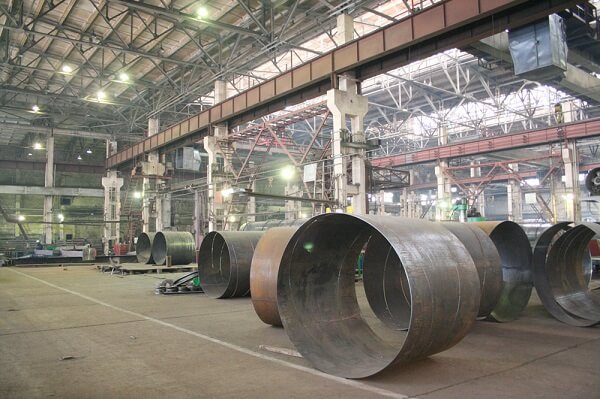

Factory workshop
The plant's specialists were the first in the Ministry of Energy to organize the production of auxiliary boiler equipment of medium pressure for the needs of the country's generating enterprises.
Boilers are the main element of the organization and implementation of the steam-power cycle of the heat supply system. The body of low-power low-pressure boilers is made of cast iron, and medium and high-pressure boilers are made of boiler steel.
In order to correctly select the type and number of boilers, technical and economic calculations are performed, taking into account the following factors:
- Maximum and minimum heat load of consumers in winter and summer.
- Distance and diameters of heating networks with a breakdown to each consumer.
- Water and fuel quality.
- Gas boiler room automation level.
- Boiler room dimensions.
The next most important element of the boiler unit is the burner device, where the process of mixing gas and air and igniting the gas-air mixture with the formation of a torch takes place. The combustion process itself takes place in the combustion chamber.
The choice of the boiler according to the heat output of the burner must correspond to its capacity, taking into account the emergency reserve. Decent gas equipment Lemax can be purchased in Ishim.
We invite you to familiarize yourself with Single-level fittings with side water inlet (type A)
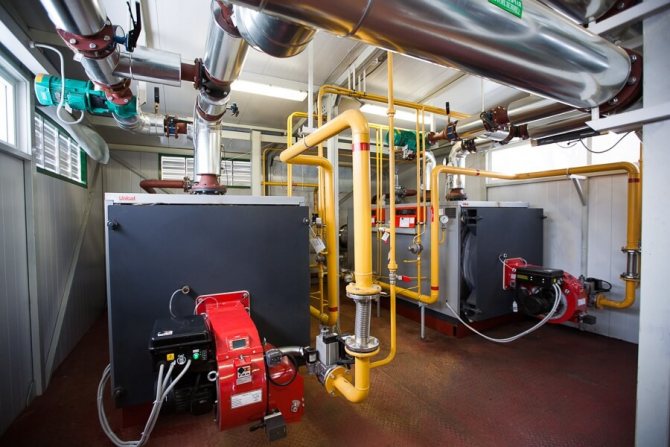

The operation of the burner is provided by gas equipment of the boiler room: GRU or GRP, regulators, filters, control devices and a security system. All elements of the gas facilities are classified as high-risk facilities, their operation is regulated by SNiP II-35-76 "Boiler Plants".
Errors of domestic hot water boilers
All gas-fired hot water boilers have a single technological principle of heating the coolant and must meet state requirements for safe operation.
The most common errors in hot water boilers:
- Torch breakage on the burner device. This failure is usually caused by high parameters for vacuum in the furnace and the rate of flow of the torch to the combustion mouth, as well as low pressure in the gas network.
- High pressure in the heating circuit, exceeding the value provided for by the regime card. The most common reasons for such an error can be: inoperative circulation pump, leakage in the network, clogged heat exchanger and convective heating surfaces of the boiler.
- High temperature of the heating medium due to low circulation in the boiler. A failure can occur with poor pump operation, non-working temperature sensors in the boiler control unit, forgotten heating surfaces with limescale.
- Malfunction of the electronic system of the gas cut-off valve.
Hot water gas boilers are the most common sources of heating in individual heating systems for domestic and industrial facilities.
They have the highest efficiency indicators with an efficiency of up to 92%, the maximum level of automation of thermal processes - 100%, modulation from 30 to 100% and high availability.
The advantage and safety of using hot water gas boilers
One of the main advantages of the boiler is its high efficiency, availability and economy. Their principle of operation is quite simple, and the design is designed in such a way that it provides maximum fuel combustion. Thanks to the presence of automatic control systems and sensors, such boilers are safe and easy to use.
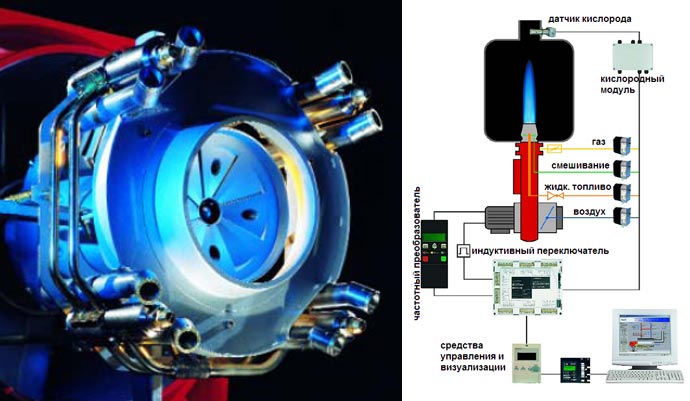

For safe operation, it is enough to follow the rules, carry out maintenance and repairs in a timely manner. One of the most dangerous problems can be the damping of a gas burner. This can happen if:
- pressure drop in the system below the established rate;
- power outage;
- lack of draft in the chimney.
In modern industrial gas boilers, to prevent attenuation, special security sensors are installed that block the gas supply in emergency situations. The boilers can be equipped with systems that regulate the intensity of the flame, blocking, if necessary, the pump, preventing overheating of the water.
Modification of industrial heating boilers
If household gas boilers are mounted and floor-standing, then industrial ones are produced in a mounted and stationary version. Both models can be used for both heating and hot water supply.
Hinged industrial gas boilers are double-circuit and single-circuit. Double-circuit ones are designed for heating hot water and heating. They can be flowing, water is heated as needed, and accumulative. In storage tanks, hot water is in the boiler, and when the set temperature drops, it is heated. Single-circuit are used exclusively for heating.
Stationary industrial gas boilers are part of the heating system, to which specific requirements are imposed with given technical parameters. These boilers are of great power, size, performance.

